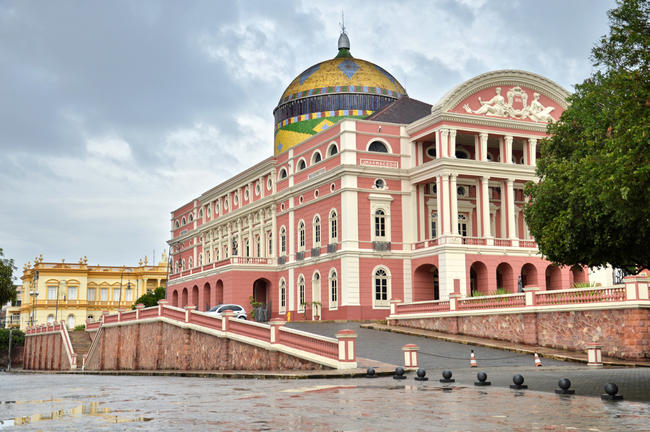
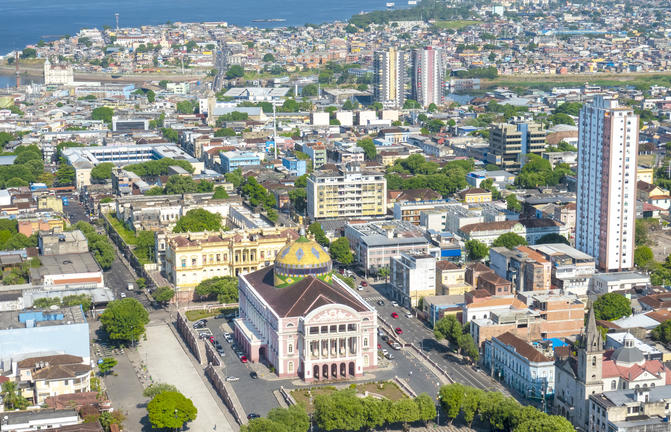




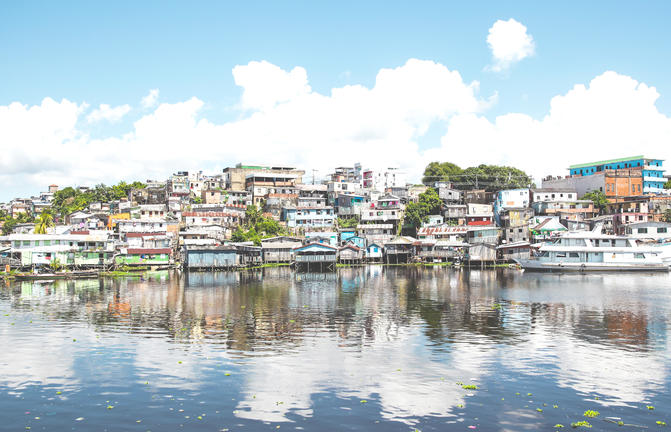
Manaus might be surprising to those expecting to see only dense Amazonian jungle. The capital of the Amazon, its largest city and primary tourism hub, Manaus is a bustling urban centre permeated with brightly coloured residential homes, modern high-rise buildings and tour offices where you can book jungle lodges and river cruises. It is located on the banks of the Rio Negro, just a few kilometres from where it joins the Amazon River, a confluence known as the ‘Meeting of the Waters’, which is accessible by boat from Manaus. According to local lore, the two rivers run side by side for six kilometres without mixing and, in fact, it’s possible to feel the different temperatures of the two water sources by dipping your hand into the currents on either side of the vessel.
Covering half of Brazil and extending widely into South America, the mighty Amazon River is arguably the second largest river in the world and bears the most water on earth. Providing 20 per cent of the ocean’s freshwater supply, and feeding the most important biome on earth, the river is essential to the health of our planet. There are several ways to enjoy the river, including a variety of guided boat and canoe tours, which can include winding through flooded forests and passing river dolphins or ‘boto’. Other animals to look out for include frogs, toucans, macaws, snakes, spiders and sloths. The Pantanal wetlands are one of the best places to see wildlife. Photographers will particularly enjoy the dramatic meeting of colours in the waters at Encontro das Aguas in Manaus, where the Rio Negro and Rio Solimoes refuse to mix.
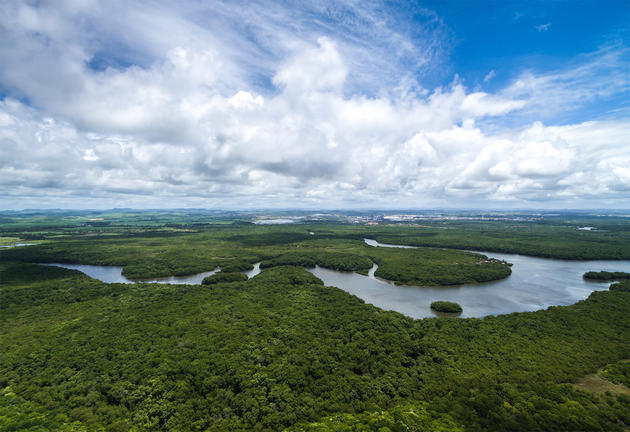
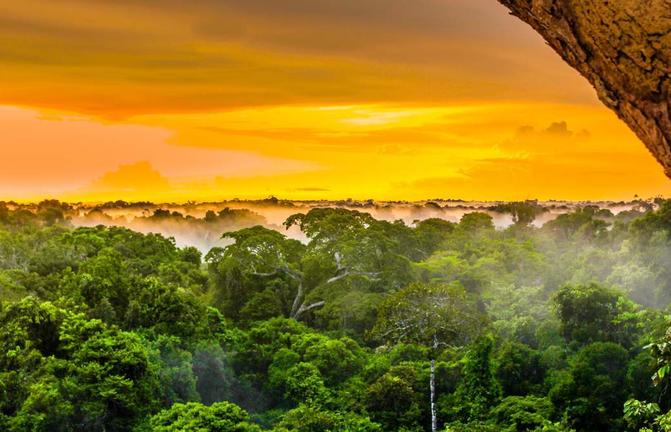
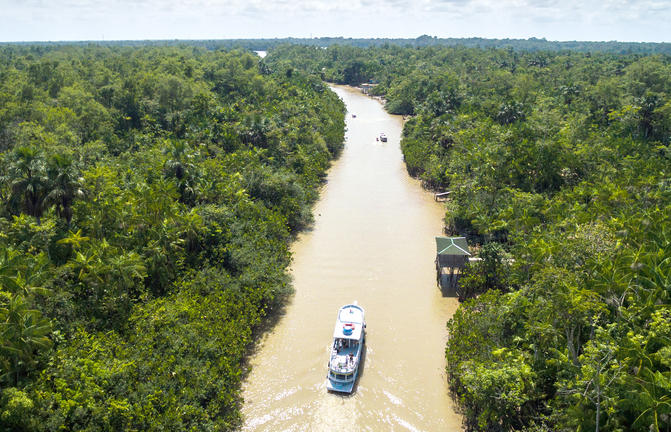
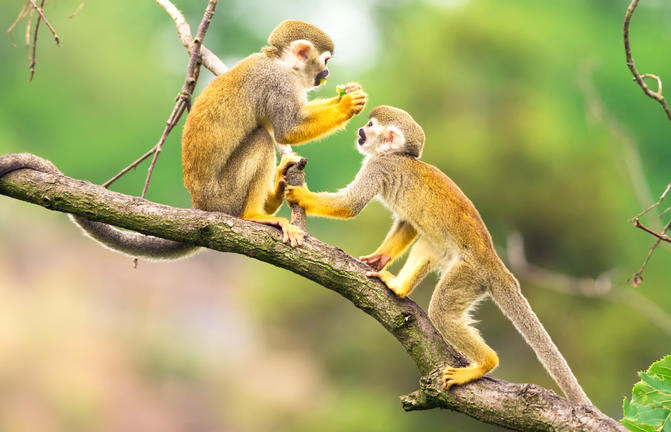
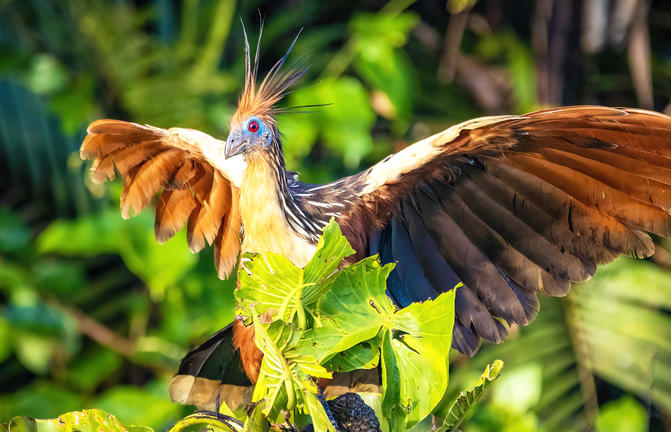
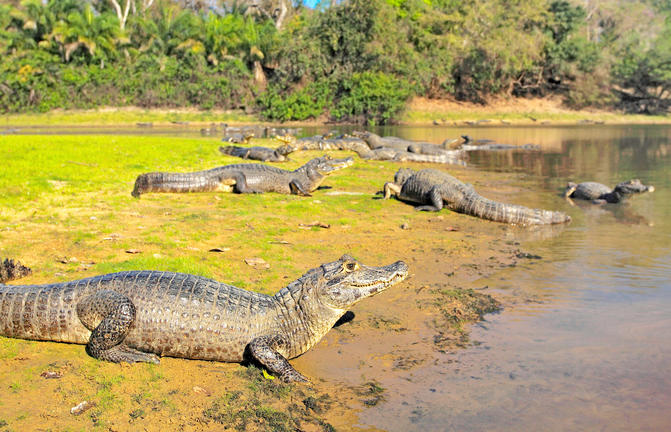
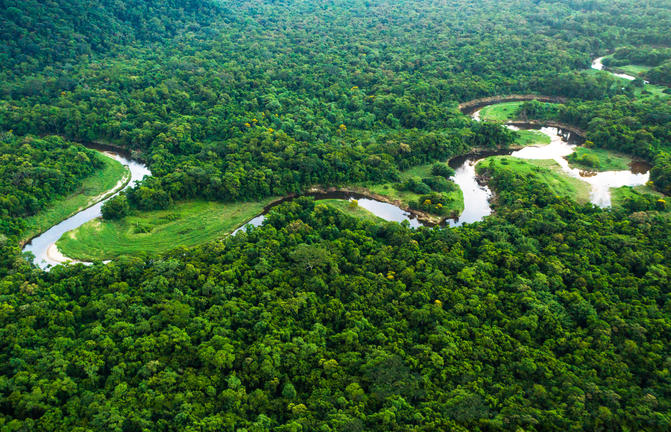

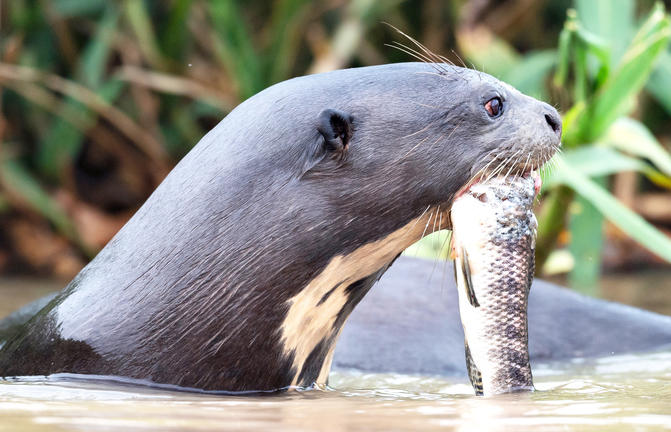
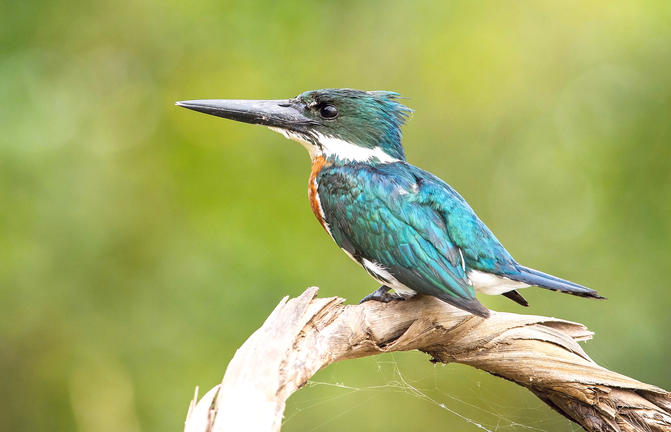
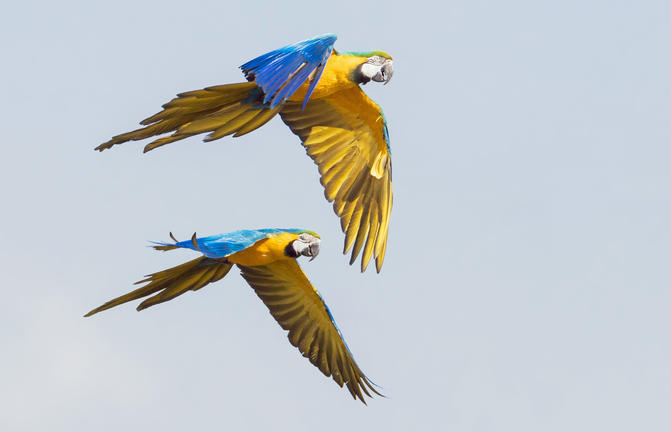
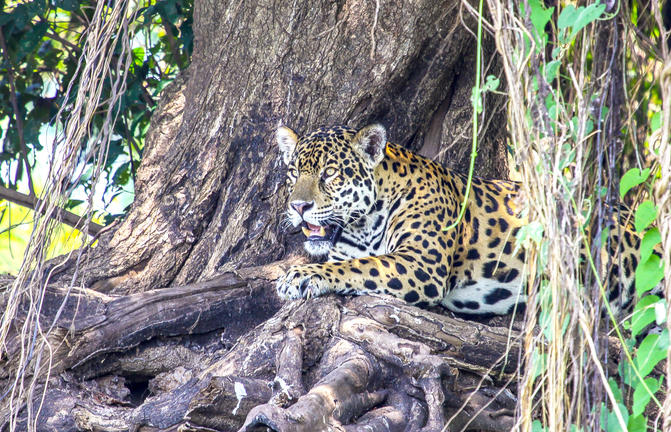
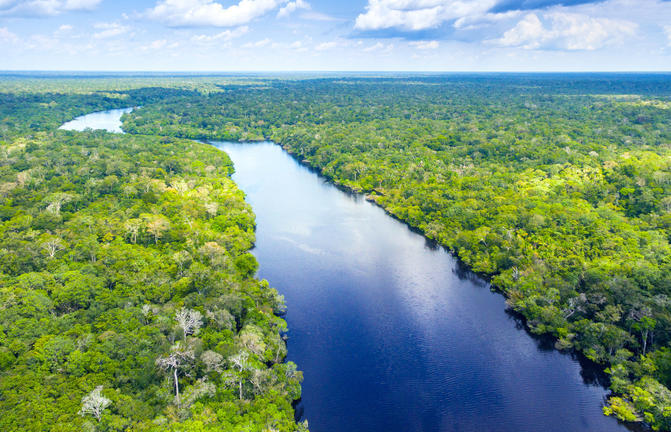
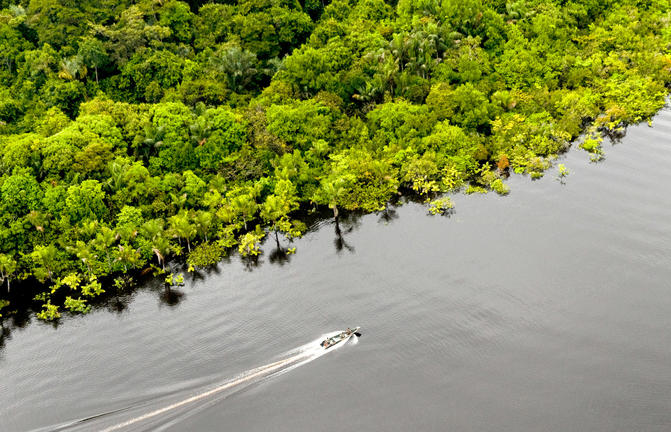

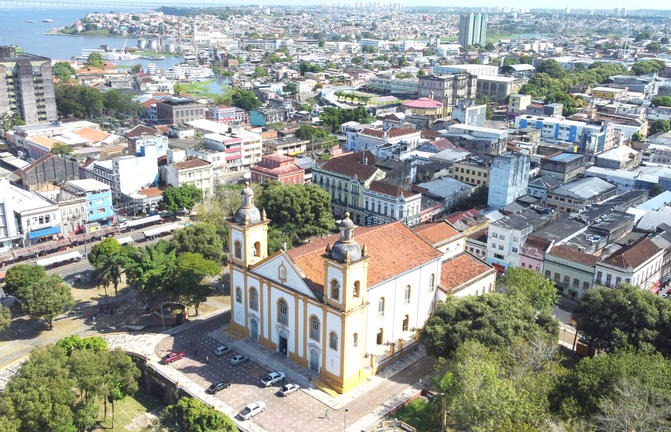
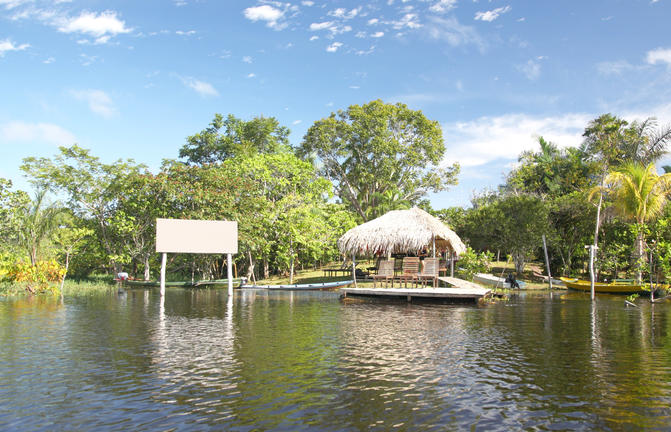
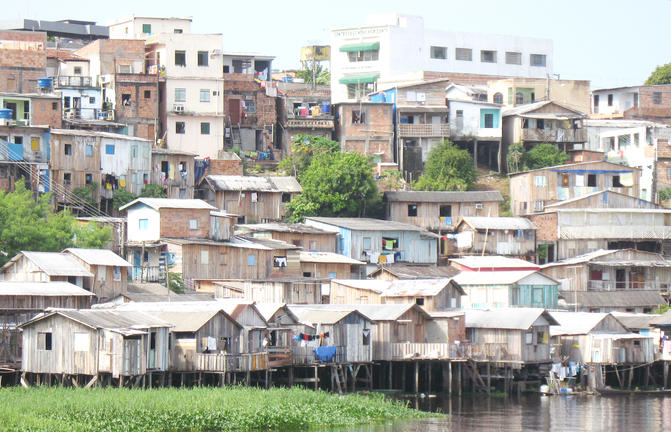
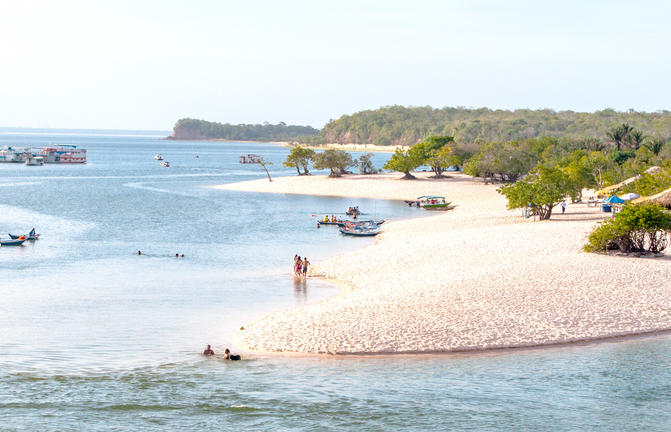
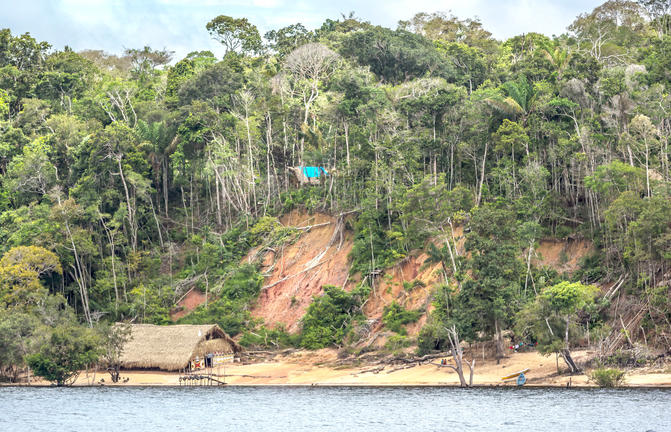
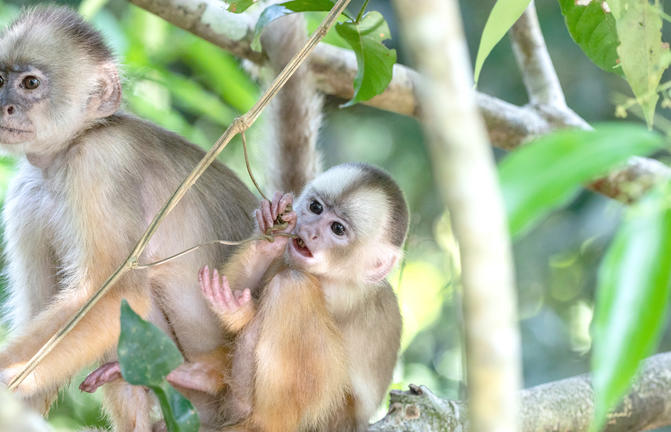
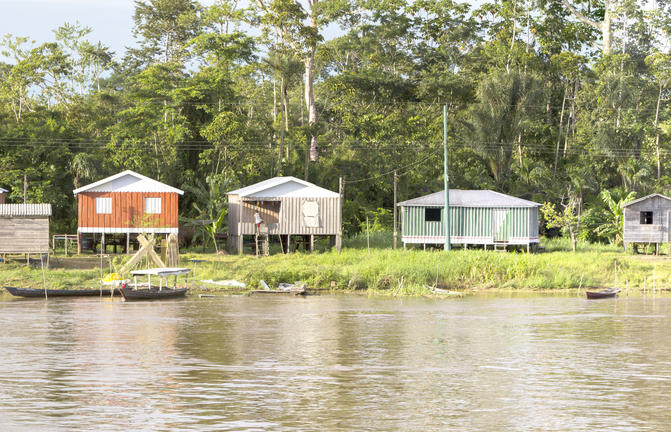
Situated in northwestern Brazil where the mighty Solimoes, Negro, and Madeira rivers converge to form the grand Rio Amazonas, the Amazonas State is the largest in Brazil and is covered almost entirely by the Amazon rainforest. The rivers join at the capital port city of Manaus, which serves as a great base for exploring the area and offers some interesting forest tours and landmarks of its own. Visitors can look forward to taking a boat tour of the Rio Negro's Anavilhanas Archipelago and its hundreds of islands, occupied by a number of indigenous villages. Other popular attractions include the Jardim Botânico Adolpho Ducke in Manaus, the world’s largest urban forest, and, also in Manaus, the gorgeous opera house of Teatro Amazonas, built at the height of the rubber boom.
As previously described




















As previously described
As previously described














